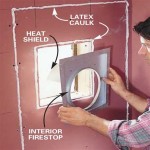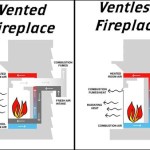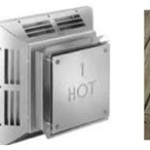Cottage Style Fireplaces: Warmth, Character, and Timeless Appeal
Cottage style fireplaces evoke a sense of cozy comfort and rustic charm, seamlessly blending functionality with aesthetic appeal. They are a focal point in a room, providing warmth during cooler months and serving as a visual anchor throughout the year. The defining characteristics of a cottage style fireplace emphasize natural materials, gentle curves, and a relaxed, unpretentious atmosphere. This article explores the key elements, design features, and considerations for incorporating a cottage style fireplace into a home.
Unlike modern or minimalist designs that prioritize sleek lines and stark surfaces, cottage style fireplaces celebrate imperfection and the beauty of handcrafted details. They often incorporate reclaimed wood, natural stone, and vintage-inspired hardware, creating a space that feels lived-in and inviting. The overall goal is to create a fireplace that looks as though it has been a part of the home for generations, adding character and history to the living space.
Key Elements of Cottage Style Fireplaces
Several factors contribute to the distinctive look of a cottage style fireplace. Understanding these elements is crucial for achieving the desired aesthetic and ensuring the fireplace harmonizes with the overall design of the room.
Natural Materials: The use of natural materials is paramount in cottage style design. Stone, such as river rock, fieldstone, or flagstone, is a popular choice for the fireplace surround. These materials bring an organic texture and earthy tones, instantly grounding the fireplace within the natural world. Brick, particularly painted or whitewashed brick, is another common option, offering a more refined yet still rustic appearance.
Wood plays an equally important role. Reclaimed wood beams can be used as mantels, providing a substantial and visually striking element. Shiplap or beadboard paneling can frame the fireplace, adding subtle texture and visual interest. The wood is often left untreated or stained in a light, natural finish to highlight its grain and character, echoing the desire for authenticity inherent in cottage design.
Soft Colors and Textures: Cottage style fireplaces typically avoid bold, saturated colors. Instead, they embrace a palette of soft, muted tones. Whites, creams, grays, and pastels are frequently used on the fireplace surround, walls, and mantel. These colors create a sense of calm and tranquility, enhancing the cozy atmosphere of the room.
Texture is just as important as color. Rough-hewn stone, weathered wood, and textured paint finishes all contribute to the tactile appeal of a cottage style fireplace. Layering these different textures creates depth and visual interest, preventing the fireplace from feeling flat or monotonous.
Architectural Details: Intricate architectural details are a hallmark of cottage style fireplaces. These details can include corbels, decorative moldings, and intricately carved mantels. These elements add a touch of elegance and sophistication, elevating the overall design without sacrificing the rustic charm. The details are often subtly incorporated, adding visual interest without overwhelming the eye.
Another common feature is the incorporation of a firebox surround. These surrounds, often made of cast iron or decorative tile, frame the firebox and add a focal point within the larger fireplace design. Choosing a surround with intricate patterns or vintage-inspired details can further enhance the cottage aesthetic.
Design Features for Enhancing Cottage Charm
Beyond the fundamental elements, several design features can elevate the cottage charm of a fireplace. These features add personality and character to the fireplace, making it a unique and inviting focal point in the room.
Built-In Shelving: Integrating built-in shelving on either side of the fireplace is a classic cottage design element. These shelves provide ample storage space and display opportunities, allowing homeowners to showcase cherished possessions, books, and decorative items. The shelves are often painted in a soft, complementary color to the fireplace surround, creating a cohesive and visually appealing design.
The items displayed on the shelves can further enhance the cottage aesthetic. Antique books, vintage pottery, natural elements like seashells or dried flowers, and family photographs all contribute to the cozy and personal atmosphere. The shelves provide an opportunity to curate a collection of items that reflect the homeowner's personality and style.
Mantel Decor: The mantel itself is a prime space for decorating and adding personality to a cottage style fireplace. A simple arrangement of candles, a vintage clock, or a collection of antique vases can create a subtle and elegant display. Alternatively, a more elaborate arrangement featuring garlands, greenery, and seasonal decorations can add a festive touch.
When decorating the mantel, it is important to consider the scale and proportion of the space. Avoid overcrowding the mantel with too many items, as this can create a cluttered and overwhelming look. Instead, focus on creating a balanced and harmonious arrangement that complements the overall design of the fireplace.
Hearth Design: The hearth, the area directly in front of the fireplace, is another important design element. A stone or brick hearth adds a rustic and durable surface, providing a safe and functional space for tending to the fire. The hearth can be flush with the surrounding floor or raised slightly, depending on the desired aesthetic and functionality.
Consider the shape and size of the hearth in relation to the fireplace and the surrounding room. A larger hearth can provide more seating space and create a more inviting atmosphere. A smaller hearth can create a more streamlined and minimalist look, particularly in smaller spaces.
Considerations for Integrating a Cottage Style Fireplace
Before embarking on a cottage style fireplace project, several practical considerations should be taken into account. These considerations encompass safety, functionality, and overall design harmony.
Safety Codes and Regulations: Fireplaces must adhere to strict safety codes and regulations to ensure the safety of the occupants. Consult with a qualified contractor or building inspector to ensure that the fireplace meets all applicable standards. These standards typically cover aspects such as firebox construction, chimney design, and clearance requirements.
Proper ventilation is crucial for preventing the buildup of harmful gases and ensuring efficient combustion. The chimney must be properly sized and constructed to allow for adequate airflow. Regular inspections and maintenance are essential for maintaining the safety and efficiency of the fireplace.
Fuel Type and Efficiency: The choice of fuel type, whether wood-burning, gas, or electric, will impact the design and functionality of the fireplace. Wood-burning fireplaces offer a traditional and aesthetically pleasing experience but require more maintenance and attention. Gas fireplaces are more convenient and require less maintenance but may not offer the same level of ambiance. Electric fireplaces are the most convenient option but typically lack the visual appeal of a traditional fireplace.
Consider the efficiency of the fireplace in relation to heating costs and environmental impact. High-efficiency wood-burning stoves and gas fireplaces are designed to minimize heat loss and reduce emissions. Electric fireplaces are generally the most energy-efficient option, as they convert electricity directly into heat.
Room Size and Proportion: The size and proportion of the fireplace should be carefully considered in relation to the size of the room. A fireplace that is too large can overwhelm the space, while a fireplace that is too small may get lost in the overall design. Aim for a fireplace that is proportionate to the room and serves as a visually balanced focal point.
In smaller rooms, consider a corner fireplace to maximize space. In larger rooms, a more substantial fireplace with built-in shelving or intricate architectural details can create a dramatic and inviting focal point. The goal is to create a fireplace that enhances the overall aesthetic of the room without overpowering the space.
By carefully considering these key elements, design features, and practical considerations, homeowners can create a cottage style fireplace that is both beautiful and functional, adding warmth, character, and timeless appeal to their home.

Beautiful European Cottage Fireplace Makeover Ideas Inspiration Open Doors Hearts

51 Farmhouse Fireplace Ideas To Decorate Your House Rengus Com Country Cottage Decor Living Rooms

Cottage Fireplaces Simply Charming

Cottage Style Fireplaces Hearth And Home Distributors Of Utah Llc

34 Cozy Farmhouse Fireplace Ideas To Curl Up Next

10 Fireplace Ideas Town Country Living

House Home 75 Fireplaces To Warm Up Your During The Colder Months

10 Fireplace Ideas Town Country Living

Top Cottage Fireplace Makeover Ideas

14 Wonderful Fireplace Decor Ideas For Your Mantel Foyr
Related Posts








